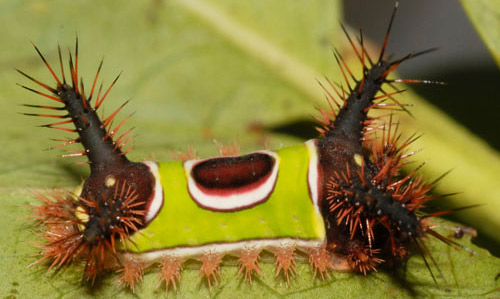Several gardeners have mentioned that they have been stung by a caterpillar! When I discovered this, I was quite shocked. I never knew that even caterpillars can be dangerous.
When I asked about it to a local gardener, he mentioned that he was stung by a caterpillar once. He also said that the effect was so harsh that he had to visit a physician.
A few gardeners have mentioned that when the caterpillar stung them, they were completely knocked down to the ground. Several gardeners also mentioned that they have never had such experiences but did know about such caterpillars.
Also, some gardeners had no idea about any such case of caterpillars. So, I decided to explore these caterpillars.
In this write-up, we are going to talk about the Saddleback caterpillar & its sting. We also are discussing how to safeguard, recognize & react if you are stung by one. Keep reading!
Did You Know Some Caterpillars Can Sting?
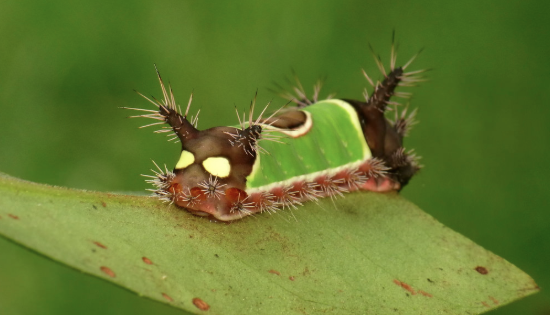
Caterpillars are a very common type of pest found in the garden. But some of them are dangerous. Many of us assume that only ants, bees, wasps & hornets can sting.
The reason can be self-defense, attacking prey, or protection of their home. But several gardeners have also had a stinging experience by caterpillar!
Not all species of the caterpillar have the capability to sting, but only a few can do so! Recognizing & staying away from these caterpillar species would be the wisest decision ever made.
Talking about the US, there are four types of caterpillar species that can cause a sting. The four stinging caterpillars are as follows:
- Puss Caterpillar
- Io Moth Caterpillar
- Hag Caterpillar &
- Saddleback Caterpillar
The number of these stinging caterpillars may vary from state to state, but these stinging caterpillars are very commonly found.
Saddleback Caterpillars: Brief Description
Saddleback caterpillars have the scientific name Acharia stimulea. They are about an inch long in the length. It is a larval stage of a moth.
The moth is in a color scheme of plain dark brown and quite ugly. But the saddleback caterpillar is quite colorful & attractive. It gets its common name of saddleback due to a bright green saddle.
Usually, the saddleback caterpillars are found in plenty to the eastern side of the US. Most of these caterpillars are found in shrubs, trees, plants & even in grasses.
These beautiful-looking saddleback caterpillars can be dangerous if you touch them, but when they evolve into moths, they are quite harmless and instead serve as a source of food for many organisms.
How Do the Saddleback Caterpillars Sting?
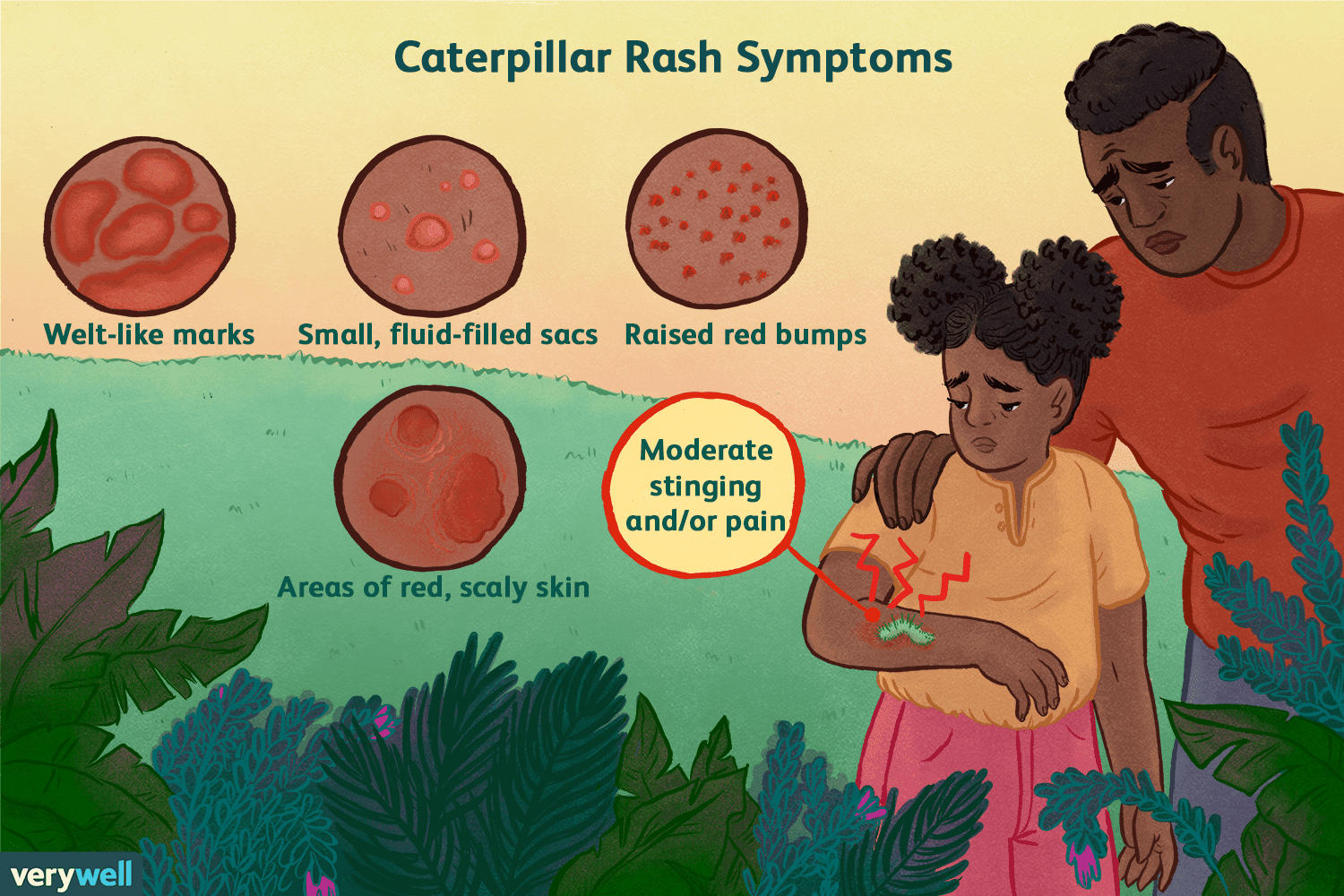
Talking specifically about the saddleback caterpillar, in most cases when it causes a sting, it irritates that part. But, for the people who have an allergy to bee stings, and other allergies related to certain pheromones or toxins, these stings can be life-threatening. In some cases, it can cause severe weakness or extreme pain.
If you see a saddleback caterpillar, then do not even dare to touch it. This caterpillar has several spines over its body. These spines are a protection mechanism for the caterpillar. These spines are not just the normal ones, they are connected to the poisonous glands of the caterpillar.
The sting can be so powerful that it can throw off a healthy man from a standing position. These spines are not only venomous but also break off from the caterpillar’s body and get stuck in your skin. But again, many people have reported that the sting from the saddleback caterpillar has had only a slight effect on them. The effects ranging from itching, slight pain, redness & some discomfort.
How to Recognize A Saddleback Caterpillar?
No doubt about the beautiful & attractive look this saddleback caterpillar has acquired. It has sparky & flashy colors, and not to forget about the spines. Not all species of caterpillars can sting, thus recognizing the ones that sting becomes quite important.
The best part about these stinging caterpillars is that they usually live in a cluster or feed over only a single species of plant. So, you surely would know where to find them. Here are a few characteristics of saddleback caterpillars that can help you recognize them:
- The length of saddleback caterpillars is anywhere around an inch.
- They have small spines over their body. There are smaller spines on the sides of their body.
- They have a green saddle over their body.
- At the center of the green saddle, there would be an oval shape spot. The color of the oval spot is somewhat like purple, brown.
- They have a rosy, pink tuft on both their sides.
- There is a white color strip alongside the bottom part & as an outline for the purple-brown patch.
- There can be a few spots on the body of saddleback caterpillars.
- Saddleback caterpillars generally feed over apples, chestnuts, corn, cherries, plums, pear, rose, and many more.
Q. How Much Damage Does Saddleback Caterpillars Cause to The Plants
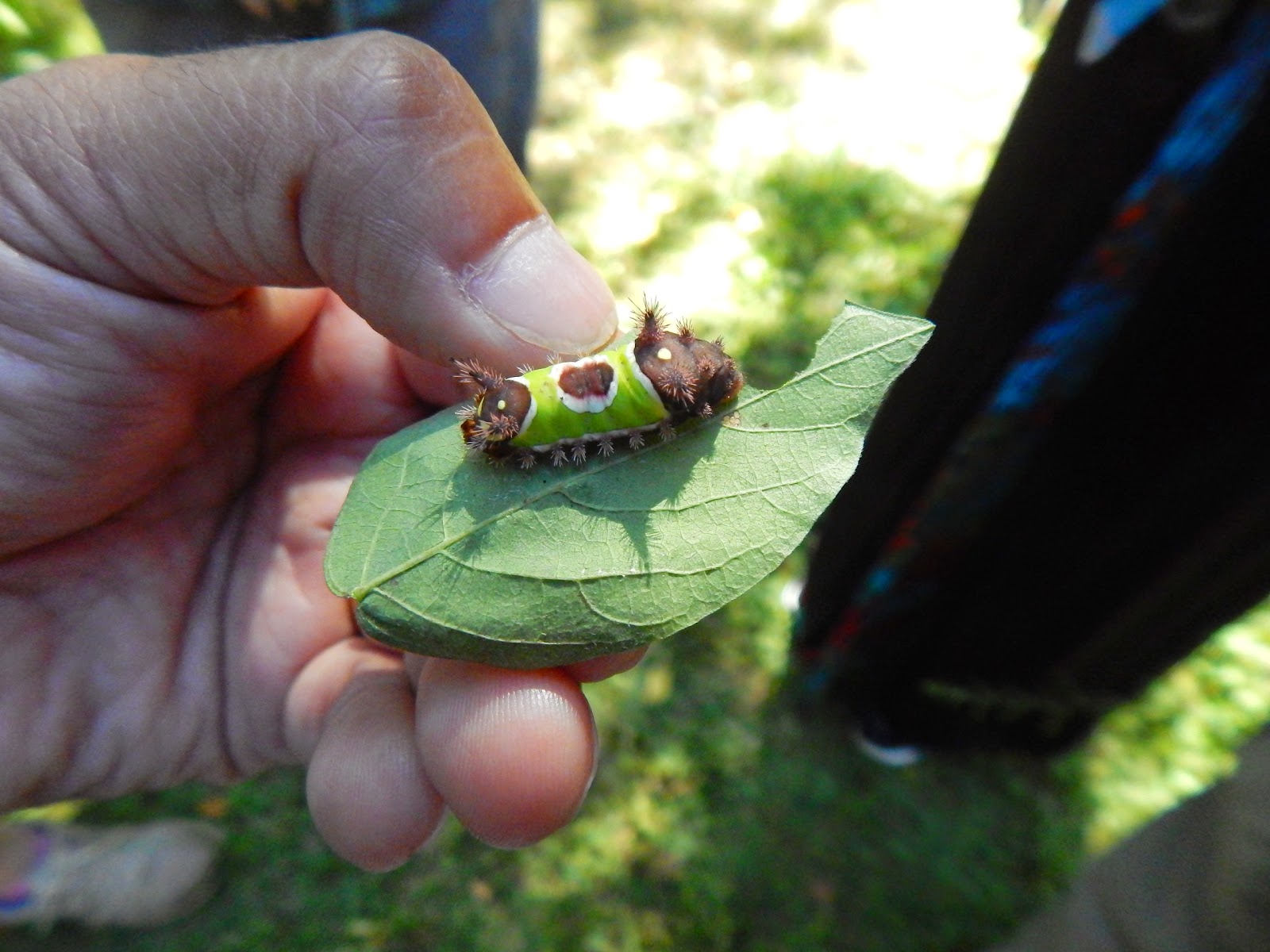
Ans. Venomous caterpillars are a part of slug caterpillars. These slug caterpillars have a particular characteristic that is slow-moving. Saddleback caterpillars usually stay alone and mind their own business. Saddleback caterpillars have a wide variety of options to feast and moreover are in lesser numbers. So, there is a very minimal threat from these crawling creatures. Moreover, when they evolve into moths, they are the prey for several animal & bird species.
What Happens If I Accidentally Touch A Saddleback Caterpillar?
The first thing you should do is to not panic. Just move away from the place. Take out any visible spines carefully. A hack for removing the stings that are not visible requires you to take a piece of transparent tape or an adhesive.
Apply it over the part where the saddleback caterpillar stung & then pulls it off. If you try this hack several times, then it may work.
Wash off the part with soap & clean water to remove the venom from the wound. Apply ice over the part where the saddleback caterpillar had stung. This will help in controlling the swelling. If you can somehow get ammonia, then apply it.
It reduces the pain of the sting. Else, the administration of antihistamines can also reduce the pain. If you are having any allergic reactions, then it is advised to quickly meet a doctor or a physician.
How Deal with These Saddleback Caterpillars?
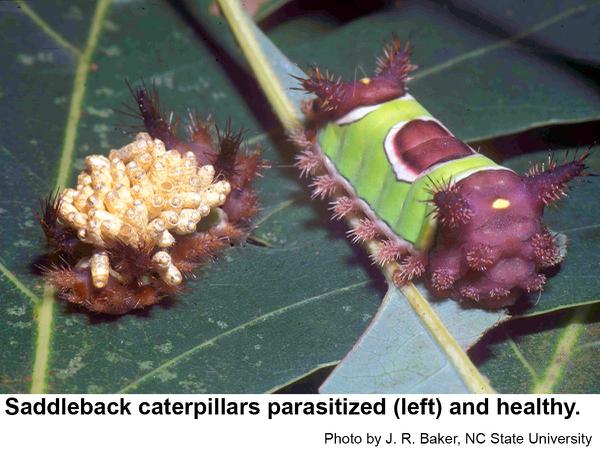
If you face any allergic reaction towards venom, pheromones, or any other sting then you must be very careful from these saddleback caterpillars. If you have a homegrown, and there are saddleback caterpillars, then you must quickly deal with the problem.
Always wear protective goggles, a face mask or respirator, protective gloves & protective clothing. Only then you can check for the saddleback caterpillars in your garden.
The best way is to manually collect the saddleback caterpillars and drop them into a soap solution. Please do ensure that your proper protective equipment while doing so. Do not forget about the face mask or respirator while handpicking saddleback caterpillars.
The spines are quite delicate, once they break off the caterpillar’s body they flow by the air and can be inhaled.
Another good alternative method is breeding or introducing the natural predators of these saddleback caterpillars. Spraying Sevin or Bacillus thuringiensis (Bt) also can work in killing the saddleback caterpillars. This method is not so preferable as it has selectivity towards all the caterpillars.
Note: Never touch these saddleback caterpillars with your bare hands. Always use protective gloves or remove using any other object. Also, take care of children & pets. You can at least tell your children about the hazards of touching a colorful caterpillar and ask them to never touch them.
Conclusion
The simplest way to conclude is by noting that you should never touch them. Also, try not to kill them unnecessarily. They are a part of nature just like human beings.
Moreover, the stings are just a protective mechanism to safeguard them from predators. Also, once they evolve into a moth then they act as a source of food to multiple species.
Wear protective equipment whenever working in the garden. Try to avoid touching them at any cost. If such an unfortunate scenario takes place, then please do act quickly.
Follow the steps of removing the spines, and then wash the part with soap & clean water. Apply an ice pack over it, and if you are having any allergic symptoms them contact a physician.

